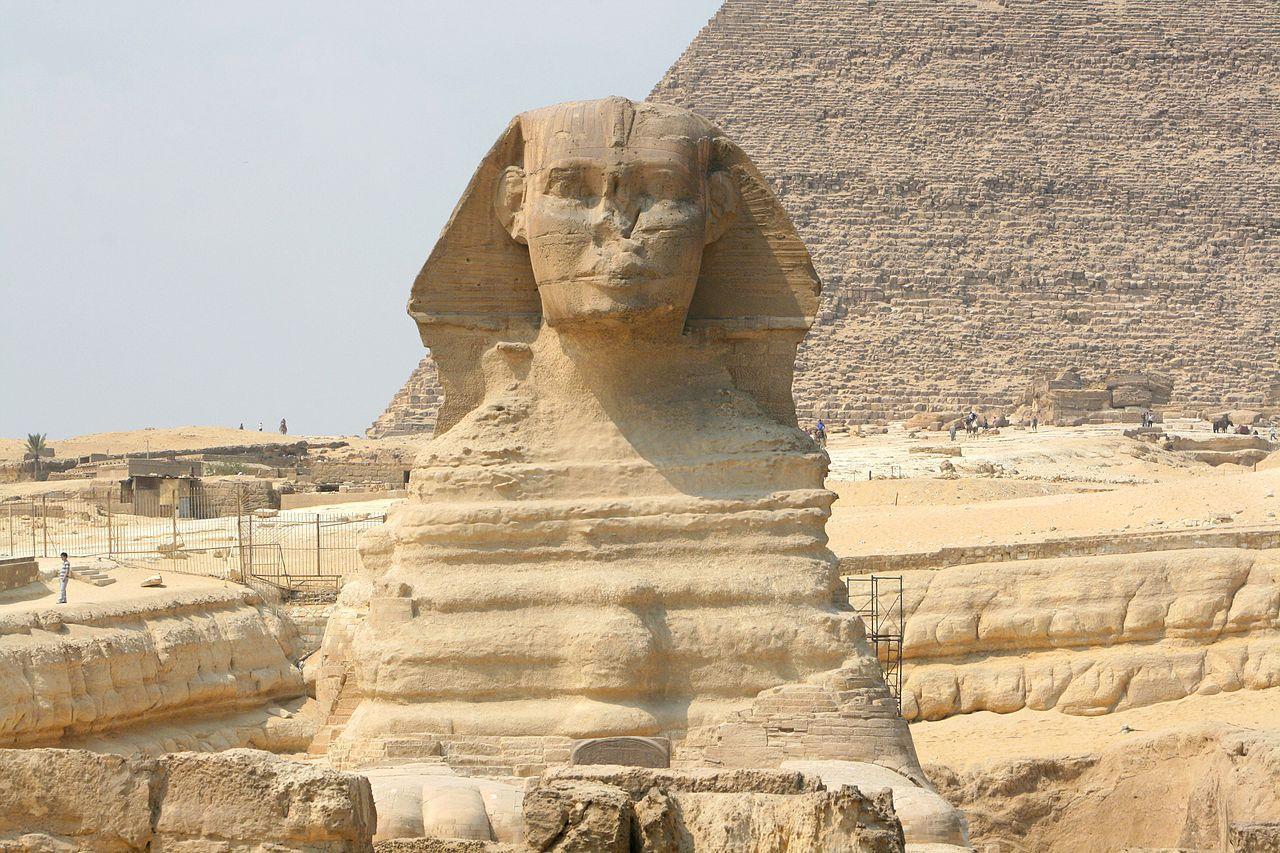Scientists Claim They Have Discovered How Egypt’s Great Sphinx Was Formed
A group of scientists studying the origin of the Great Sphinx of Egypt claim to have finally discovered how the iconic landmark was shaped thousands of years ago.
Researchers from the University of New York have made a significant discovery. They propose that a substantial part of the Sphinx’s original body may have predated the Egyptians’ transformation into a godly image.
The Sphinx of Giza
The Sphinx, majestically nestled in front of the Great Pyramid of Giza, stands as one of the most awe-inspiring and recognizable landmarks in the world.

Source: Wikimedia
The iconic limestone monument, with its head of a pharaoh and the body of a lion, is a testament to ancient craftsmanship. Constructed around 2,600 BCE, its true origin remains shrouded in mystery, sparking curiosity and intrigue.
The Construction of the Sphinx
According to the prevailing theory, the Sphinx was carved from a single, colossal piece of limestone that emerged after extensive quarrying in the region thousands of years ago. Standing over 66 feet tall and stretching 240 feet long, it’s a testament to ancient craftsmanship and one of the largest statues on Earth.

Source: Wikimedia
Despite this theory being readily accepted by most academics, a group of researchers from the University of New York has proposed a different origin for the monument.
New York Researchers Recreate Conditions of Egypt 4,500 Years Ago
A study shared by the scientists in the journal Physical Review Fluids provides insight into how the shape of this exquisite statue was formed over 4,500 years ago.

Source: Wikimedia
The researchers claim wind erosion may have been key in shaping the rock before the Egyptians later carved it. To validate this, the scientists embarked on a mission to recreate conditions that mirrored Egypt during the period in which the Sphinx was constructed.
Origin Story of the Sphinx
Leif Ristroph, senior author of the study, explained, “Our findings offer a possible ‘origin story’ for how Sphinx-like formations can come about from erosion.”

Source: Wikimedia
Ristroph, an associate professor at New York University’s Courant Institute of Mathematical Sciences, added, “Our laboratory experiments showed that surprisingly Sphinx-like shapes can, in fact, come from materials being eroded by fast flows.”
Recreating the Conditions of Egypt
The study created several yardangs, which are rock formations typically found in deserts that have been sculpted by dust and sand blown by the wind.

Source: Wikimedia
Ristrop and his colleagues created mounds of clay with much less erodible materials embedded within, which mimics the terrain where the sphinx is located in northeastern Egypt.
Researchers Produce Sphinx-like Formations
Researchers proceeded to test their hypothesis by washing the mounds of clay with fast-flowing streams of water. This aimed to resemble the wind that might have eroded the limestone at Giza into the initial shape of the sphinx.

Source: Wikimedia
According to the scientists, many of the formations eventually formed into sphinx-like shapes.
A Simple Take on the Origin of the Sphinx
Regarding the outcome of the study, Ristroph explained, “Our results provide a simple origin theory for how Sphinx-like formations can come about from erosion.”

Source: Freepik
He added, “There are, in fact, yardangs in existence today that look like seated or lying animals, lending support to our conclusions.”
The Study’s Results May Help Geologists in the Future
According to Ristroph, the results of the study may help researchers with future endeavors, adding, “The work may also be useful to geologists as it reveals factors that affect rock formations—namely, that they are not homogeneous or uniform in composition.”

Source: Freepik
“The unexpected shapes come from how the flows are diverted around the harder or less-erodible parts,” he said.
Early Theory Suggests the Wind Played a Role in Carving the Sphinx
Ristroph and his colleagues were not the first groups to propose erosion, and the wind of Giza may have played a pivotal role in shaping the Sphinx.

Source: Wikimedia
In 1981, geologist Farouk El-Baz proposed that the shape of the Great Sphinx was the product of natural wind erosion. Despite his work, the theory received little traction until the NYU researchers began investigating over four decades later.
The Achievement of the Egyptians
While the paper provides valuable information on the origin of the sphinx, it shouldn’t diminish the tremendous achievement of the Egyptians, who still had quite a lot of work to do to create the monument we see today.

Source: Wikimedia
The Smithsonian suggests less than 100 people could carve the vast majority of the statue in around three years.
The Sun God Horemakhet
The unique statue represents the Egyptian sun god Horemakhet, or Horus of the Horizon, who sat as the protector of the pyramids on the same plateau.

Source: Wikimedia
Records from Egypt’s New Kingdom period show that the sphinx was held in the highest regard throughout the culture, deemed sacred and royal.
